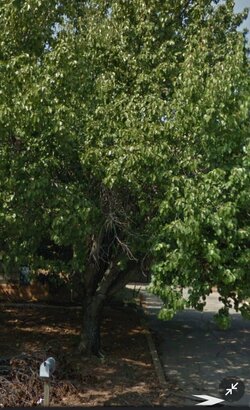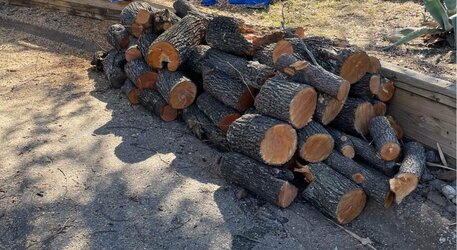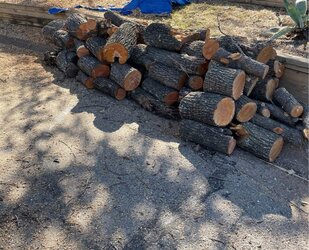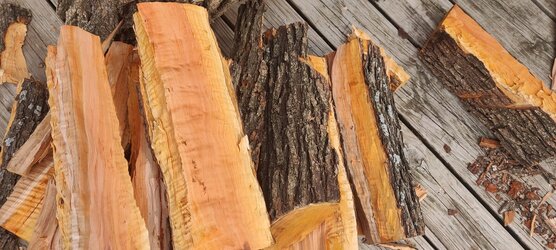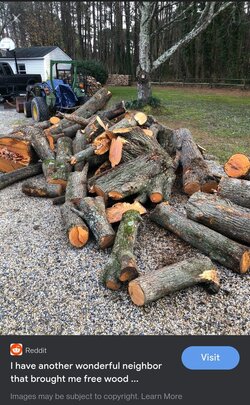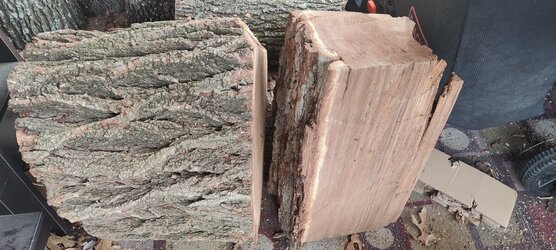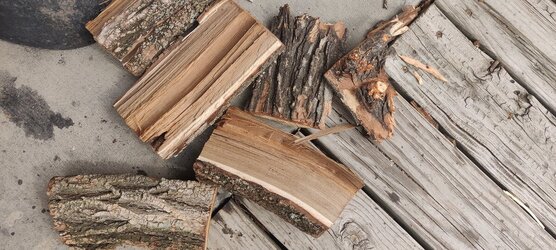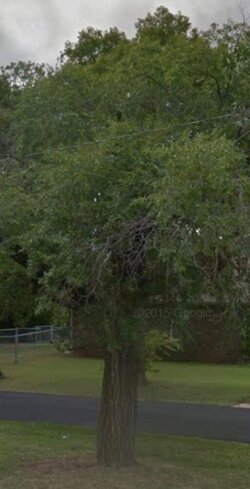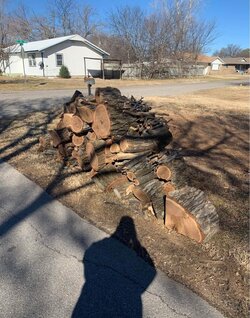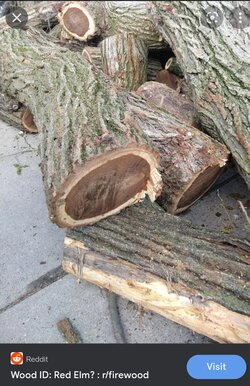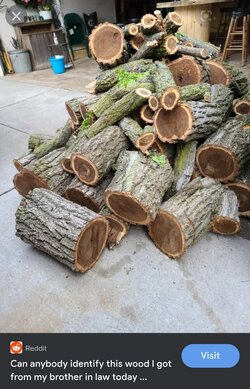Have a couple pics of the wood I picked up today. Grabbed a bunch of mesquite last night, and it definitely isn't that. It also doesn't look much like red oak either. No real smell to it either. Also have the Google maps pic of what the tree looked like before it was cut down. It has a very reddish brownish tint to it but doesnt appear to be Osage. I even split a few(finally got my X27) Don't have a pic yet.
